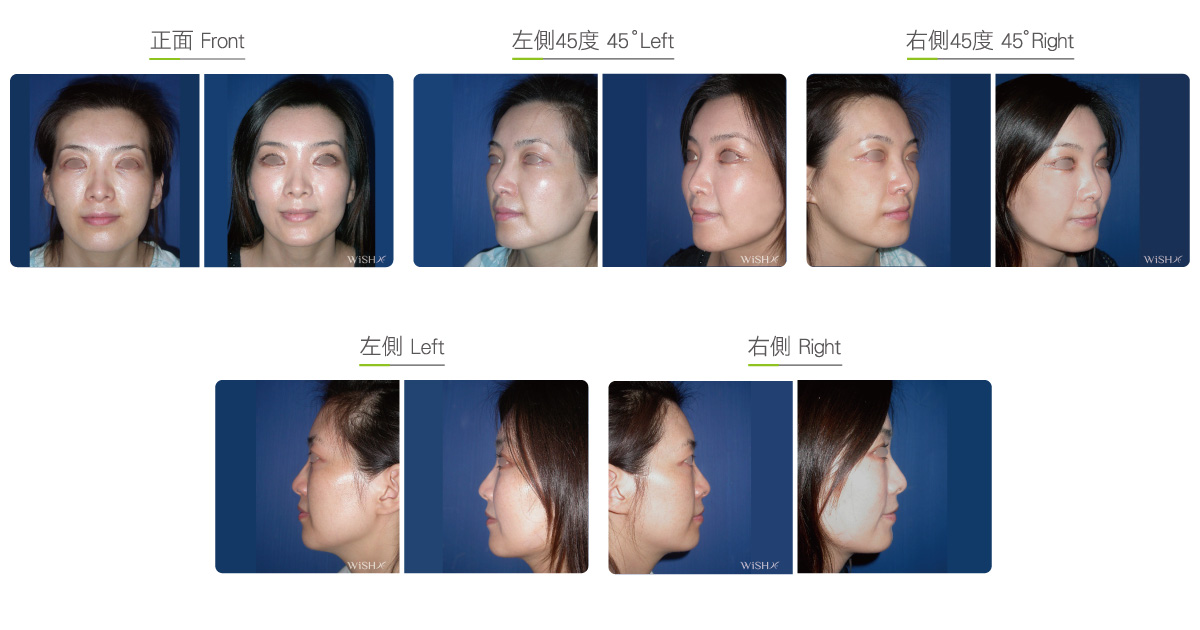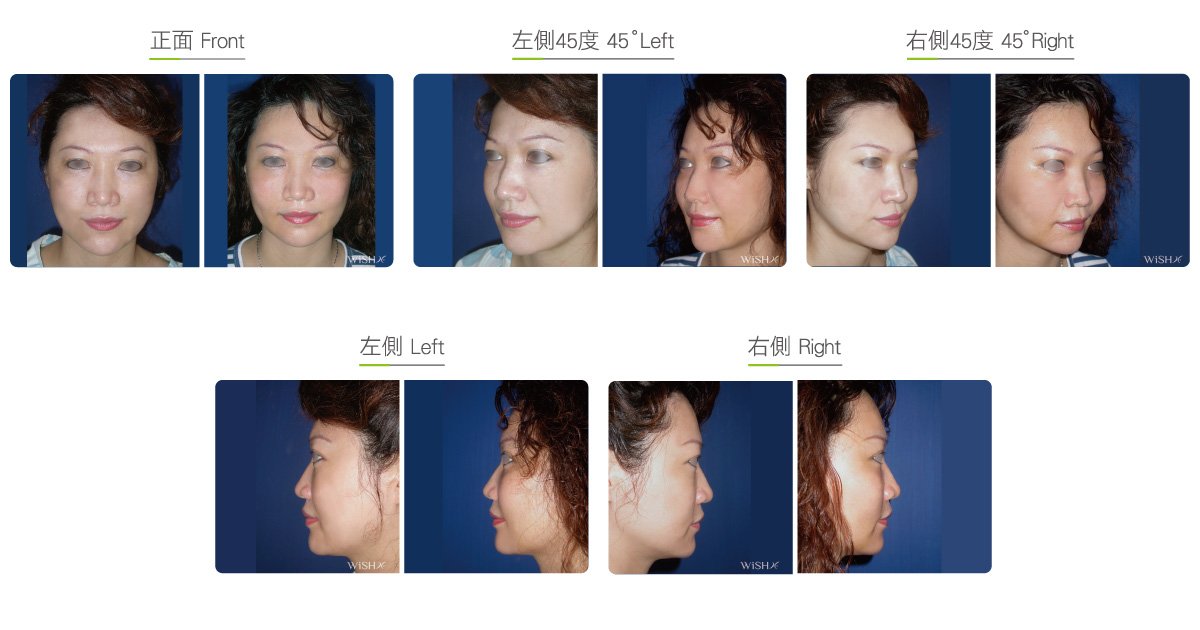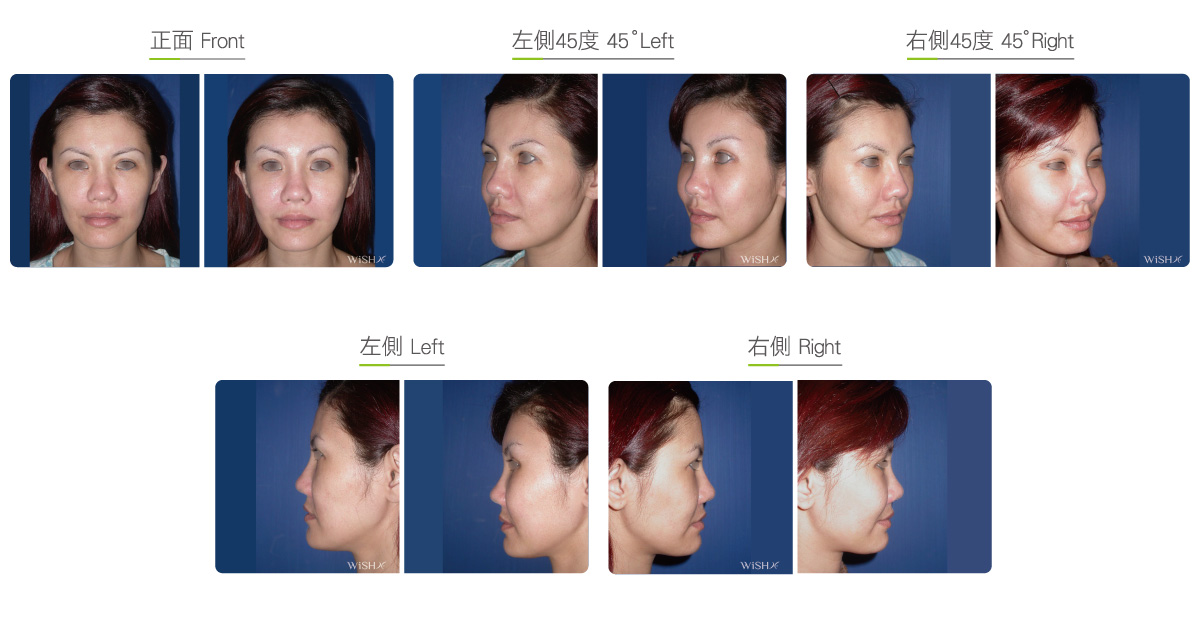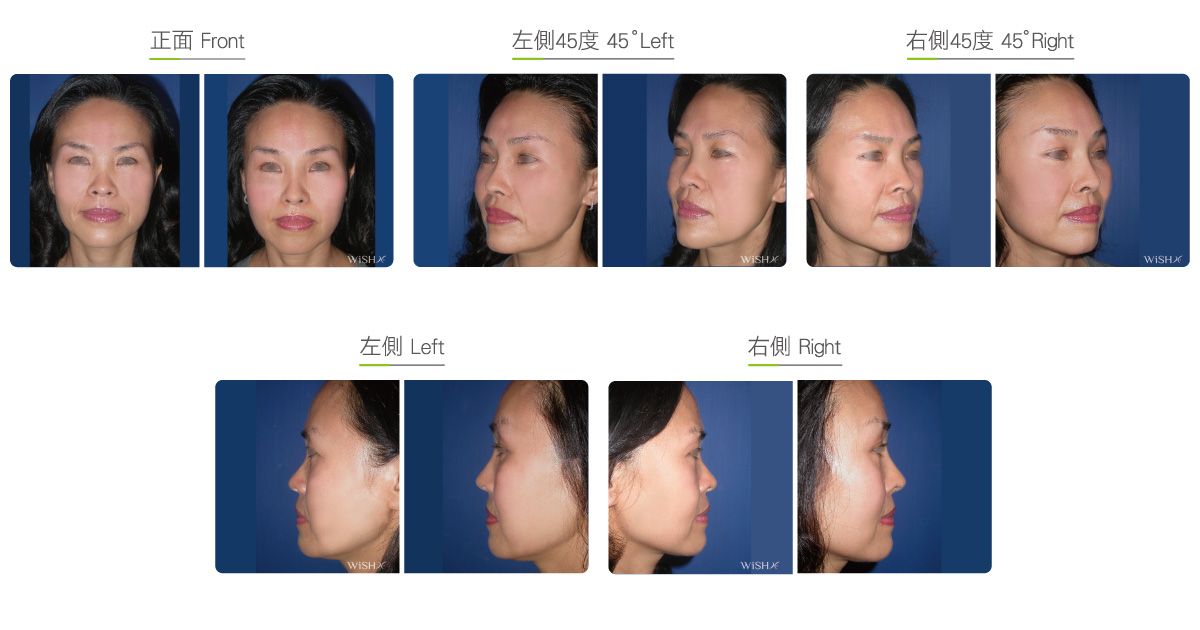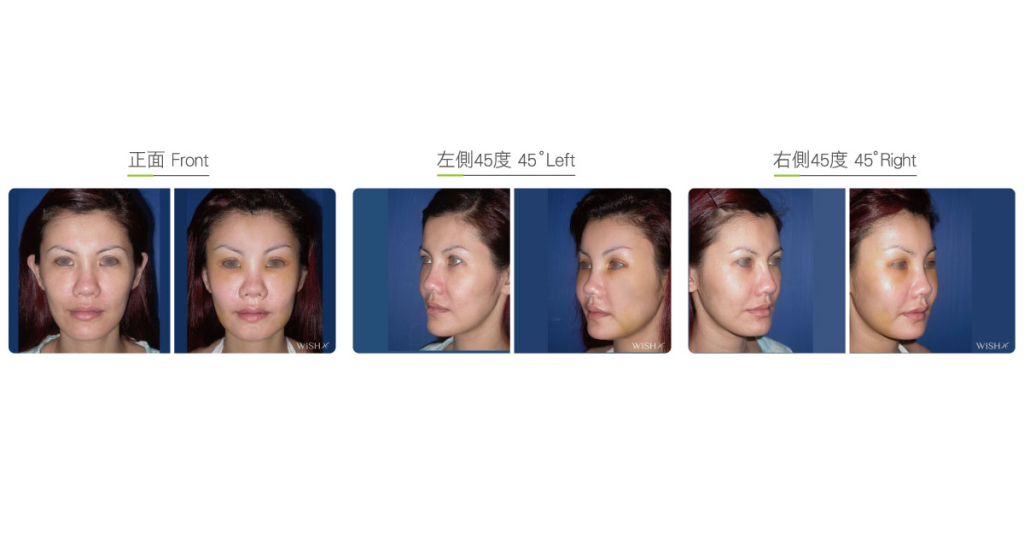Endoscopic Forehead Combined Midface Lift
This approach brings about a concurrent improvement of forehead and midface sagging, similar to a single site lift. First, Dr. Chuang creates 4–5 incisions of 1–2 cm on the scalp and an incision of 2 cm at the upper gingiva in the mouth. Next, deep skin layers near the forehead and cheekbone are separated with the aid of an endoscope. After the forehead and midface skin is completely detached from the periosteum and the space connecting these two areas is opened up, a long Endotine implant specific for midface lift is placed in the temporal incision and mouth incision to suspend the skin at the midface submalar triangle and forehead posterior–superiorly. Another Endotine implant is applied to the forehead incision for the lifting of the forehead and brow. Then, all Endotine implants are secured inside the incisions of the scalp.
This comprehensive endoscopic surgery is a long pathway lift whose incisions are located posterior to the scalp hairline and gingiva, leaving no scar on the face. Therefore, patients attain a natural effect in a subtle way. The primary advantage of this surgery is the comprehensive improvement of forehead and midface sagging, which may avoid any uneven facial appearance between the upper and lower face, which might occur in single forehead or midface lift, or even the necessity of secondary revision in the future. Hence, it is suitable for overall facial rejuvenation for women in their 30s to 40s who still have elastic skin or for a relatively long-lasting facelift with a quick recovery for middle-aged and elderly patients.
Surgical conditions
Duration
- Type of anesthesia: General anesthesia
- Type of incision: 4–5 incisions of approximately 1.5–2 cm posterior to the scalp hairline. An incision of approximately 2 cm at the upper gingiva in the mouth
- Recovery: 7–10 days
- Removal of sutures: 10–14 days
General instructions
No food and water on the day of surgery
- Rubbing or pressing the incisions on the forehead and scalp should be avoided for 1 month postoperatively.
- Hair dying or perming should be avoided for 2 months postoperatively to prevent unwanted irritation or allergy.
- Very good scalp care should be maintained for 3 months postoperatively to prevent hair loss.
Ideal candidates
- Individuals with aging or loose forehead and midface skin.
- Individuals with eyebrow drooping combined with submalar triangle loss or sagging.
- Individuals who hope to simultaneously lift the forehead and also get a youthful S-shaped curve of the midface.
- Individuals unwilling to accept the recovery periods and risks of repeated facelifts.
Potential complications
- Scalp scars
- Regional hair loss
- Temporary upper lip numbness or tightening
- Temporary cheekbone widening
- Temporary difficulty in closing the eyes
- Reaction to the Endotine implant
Surgical advantages
-
Surgical incisions hidden in the scalp and mouth, leaving no scar on face.
-
Endoscopic surgery could avoid neural or blood vascular injuries and is highly safe.
-
Surgery is precise and recovery is fast.
-
The Endotine implants present with relatively stable and long-lasting effects.
-
Forehead and midface aging are concurrently addressed and improved.
Surgical drawbacks
-
Inappropriate for elderly patients with excessively loose forehead or midface skin.
-
There might be local hair loss along the scalp incisions.
-
The scalp suffers from temporary numbness for approximately 3–6 months.
-
Occasional foreign body reaction to the Endotine implant.
-
The recovery period of combined surgery is longer than that in case of single-site forehead or midface lift.

